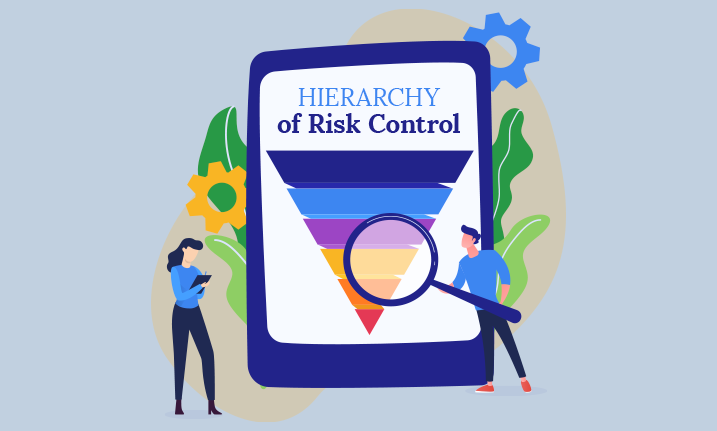

Sexual harassment is unacceptable in any situation, and there is no excuse for organisations being complacent about it in the workplace. According to the Respect@Work Sexual Harassment in Australian Workplaces Report conducted by The Australian Human Rights Commission, “Workplace sexual harassment is prevalent and pervasive: it occurs in every industry, in every location and at every level, in Australian workplaces. Australians, across the country, are suffering the financial, social, emotional, physical and psychological harm associated with sexual harassment.”
The report seeks to address the legislative and social gaps in Australia’s current response to sexual harassment by providing recommendations for employers and support avenues for victims. Indeed, the good news is that there are practical steps that senior managers can take to ensure appropriate control measures are in place to eliminate, or minimise, the risk of sexual harassment occurring in the workplace.
So, how can technology help organisations manage this area? And what are the most important markers that make up a successful framework?
Guidelines for preventing workplace sexual harassment
Essentially, employers have legal and ethical responsibilities towards preventing sexual harassment in the workplace. The Australian government has introduced a positive duty on all PCBUs to eliminate sex discrimination, sexual harassment, and victimisation as far as possible. This responsibility mandates not just responding to complaints but taking proactive preventative steps.
Worksafe’s Model Code of Practice for preventing Sexual and gender-based harassment identifies sexual harassment as a workplace hazard that is known to cause psychological and physical harm.
Therefore, actions taken must start at the top, with senior managers and leaders to take the initiative in addressing these issues.
Who wants to work in an organisation that doesn’t take this seriously, or actively implement strategic steps to prevent and manage sexual harassment?
Tangible steps in preventing and responding to sexual harassment in the workplace
In response to the Respect@Work report, the AHRC has released new guidelines for workplaces to better prevent and respond to sexual harassment. The full framework of Seven Standards covers the actions which the AHRC expects businesses to take to satisfy their positive duty under the Sex Discrimination Act.
Their recommended framework is not just victim-centred and practical, but also adaptable for businesses of all sizes and in all industries. In essence, it is designed to minimise harm to workers in clear and identifiable ways.
Here we break down some key points:
Top-down leadership
Good leadership is highlighted as the first Standard. When leaders take sexual harassment seriously, this can trickle down through the whole organisation and create a specific culture.
Senior leaders are responsible for:
- Staying informed about their legal obligations.
- Ensuring that effective measures to prevent and address unlawful conduct are developed, documented, communicated to employees, and implemented.
- Transparently displaying strong action to stamp out sexual harassment.
Focusing on trust and mutual respect in all actions can actively minimise the risk of sexual harassment occurring. And if it does occur, leaders must ensure it is dealt with promptly in a way that minimises harm to workers.
HR strategies: staff induction, incident reporting, risk assessments
It is vital to ensure there are high-level staff inductions, clear incident reporting avenues, and regular evaluation and risk assessments being undertaken. Organisations can use systems and procedures to mitigate risk and build a culture of transparency.
Leaders can first use inductions as a tool to ensure everyone is aware of expected behaviour, consequences, and available support. The effective communication of knowledge will help influence the company culture to be one that not only holds everyone accountable but empowers them to stand up for their own rights. Online inductions can make this knowledge more accessible and consistently communicated to everyone.
When it comes to providing appropriate reporting and response, leaders should ensure there is a universally known, easily accessible – and absolutely safe – place to report such as Rapid Incident Reporting software.
Once reported, incidents must be acknowledged, assessed, and action taken. Confidentiality must also be assured at every step.
Organisations can then use all this data to see the true scope and nature of the problems that might be present, and find ways to improve.
Risk management is then an essential tool to record and control any unique hazards a business may face. Incorporating sexual harassment risks into existing safety assessments will assist in ensuring that implemented control measures are thorough and effective.
Support for workers
The AHRC Framework recommends “prioritising worker wellbeing and provision of support to workers, including before they make a report, as well as after they report and during any formal processes.”
This essentially means that adopting a victim-centred approach to the way investigations are conducted when a report is made can minimise unnecessary harm to workers.

Using technology to assist with preventing sexual harassment in the workplace
Rapid Global supports the work health and safety approach taken by many of the world’s most respected organisations. Our products can actively help in setting up frameworks to prevent and respond to workplace sexual harassment via induction and ongoing training programmes, incident reporting, and risk management systems.
Contact us at Rapid Global and see how you can integrate technology to help you develop a framework for preventing and responding to sexual harassment in the workplace.







